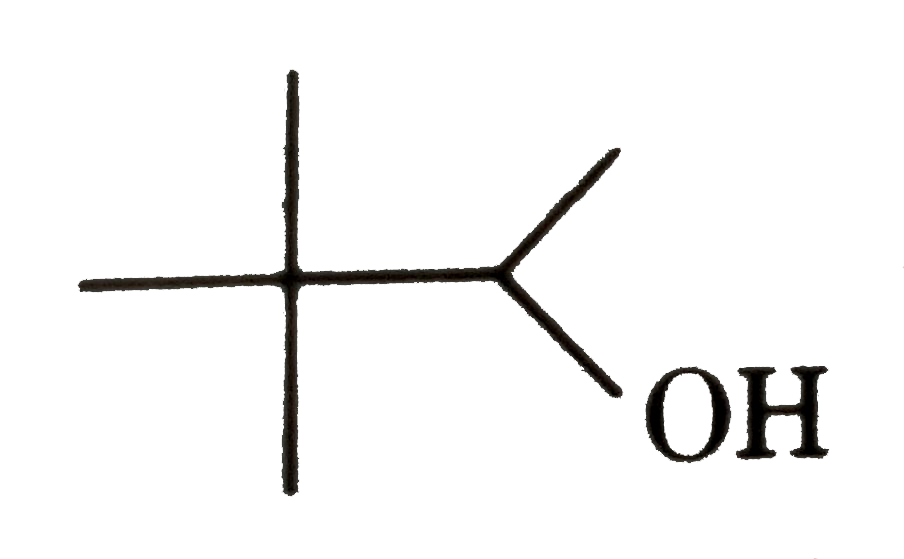This section contains STATEMENT-1 (Assertion) and STATEMENT-2 (Reason). Each question has 4 choices (A), (B), (C) and (D) out of which ONLY ONE is correct.
QSTATEMENT-1: Boron always forms covalent bond. and . STATEMENT-2: The small size of BO favours formation of covalent bond.
Statement-1 is True, Statement-2 is True, Statement-2 is a correct explanation for Statement-1
Statement-1 is True, Statement-2 is True, Statement-2 is NOT a correct explanation for Statement-1.
Statement-1 is True, Statement-2 is True. .
Statement-1 is False, Statement-2 is True.
The correct Answer is:A
According to Fajan.s rule small cations having high charge density always have tendency to form covalent bond.
Topper's Solved these Questions
- PREPARATION AND PROPERTIES OF COMPOUNDS AND GENERAL DISCUSSION OF S-AND P-BLOCK ELEMENTSBook:FIITJEEChapter:PREPARATION AND PROPERTIES OF COMPOUNDS AND GENERAL DISCUSSION OF S-AND P-BLOCK ELEMENTSExercise:MATRIX-MATCH THE FOLLOWING QUESTIONS
Explore 10 Videos
- PREPARATION AND PROPERTIES OF COMPOUNDS AND GENERAL DISCUSSION OF S-AND P-BLOCK ELEMENTSBook:FIITJEEChapter:PREPARATION AND PROPERTIES OF COMPOUNDS AND GENERAL DISCUSSION OF S-AND P-BLOCK ELEMENTSExercise:MATCHING TYPE SINGLE CORRECT QUESTION
Explore 6 Videos
- PREPARATION AND PROPERTIES OF COMPOUNDS AND GENERAL DISCUSSION OF S-AND P-BLOCK ELEMENTSBook:FIITJEEChapter:PREPARATION AND PROPERTIES OF COMPOUNDS AND GENERAL DISCUSSION OF S-AND P-BLOCK ELEMENTSExercise:COMPREHENSION -II
Explore 3 Videos
- PERIODIC PROTERTIES OF ELEMENTSBook:FIITJEEChapter:PERIODIC PROTERTIES OF ELEMENTSExercise:COMPREHENSION
Explore 13 Videos
- QUALITATIVE ANALYSIS Book:FIITJEEChapter:QUALITATIVE ANALYSIS Exercise:Single interger answer type
Explore 3 Videos
Similar Questions
This section contains Reasoning Type Questions. Each question contains STATEMENT-1 (Assertion) and STATEMENT-2 (Reason). Each question has 4. choices (A), (B), (C) and (D) out of which ONLY ONE is correct
QSTATEMENT-1: [Fe(H2O)5NO]SO4 is paramagnetic.
and
STATEMENT-2: The Fe in [Fe(H2O)5.NO]SO4 has three unpaired electrons
(A) STATEMENT-1 is True, STATEMENT-2 is True, STATEMENT-2 is correct explanation for STATEMENT-1
(B) STATEMENT-1 is True, STATEMENT-2 is True, STATEMENT-2 is NOT a correct explanation for STATEMENT-1
(C) STATEMENT-1 is True, STATEMENT-2 is False (D) STATEMENT-1 is False, STATEMENT-2 is True
View SolutionThis section contains Reasoning Type Questions. Each question contains STATEMENT-1 (Assertion) and STATEMENT-2 (Reason). Each question has 4. choices (A), (B), (C) and (D) out of which ONLY ONE is correct
QSTATEMENT-1: [Fe(H2O)5NO]SO4 is paramagnetic.
and
STATEMENT-2: The Fe in [Fe(H2O)5.NO]SO4 has three unpaired electrons
(A) STATEMENT-1 is True, STATEMENT-2 is True, STATEMENT-2 is correct explanation for STATEMENT-1
(B) STATEMENT-1 is True, STATEMENT-2 is True, STATEMENT-2 is NOT a correct explanation for STATEMENT-1
(C) STATEMENT-1 is True, STATEMENT-2 is False (D) STATEMENT-1 is False, STATEMENT-2 is True
View Solution
Knowledge Check
Assertion: Boron always froms covalent bond.
Reason: The small size of B3+ favours formation of covalent bond.ASTATEMENT-1 is True, STATEMENT-2 is True, STATEMENT-2 is a correct explanation for STATEMENT-1.BSTATEMENT-1 is True, STATEMENT-2 is True, STATEMENT-2 is NOT a correct explanation for STATEMENT-1CSTATEMENT-1 is True, STATEMENT-2 is False.DSTATEMENT-1 is False, STATEMENT-2 is True.Assertion: Boron always froms covalent bond.
Reason: The small size of B3+ favours formation of covalent bond.AIf both assertion and reason are true and the reason is the correct explanation of teh assertion.BIf both assertion and reason are true but reason in not the correct explation of the assertion.CIf assertion is true but reason is false.DIf assertion is false but reason is true.Assertion: Boron always froms covalent bond.
Reason: The small size of B3+ favours formation of covalent bond.AStatement-1 is True, Statement-2 is True , Statement-2 is a correct explanation for statement-1.BStatement-1 is True, Statement-2 is True , Statement-2 is not a correct explanation for statement-1.CStatement-1 is True, Statement-2 is False.DStatement-1 is False, Statement-2 is True.
Assertion (A) : Boron always forms covalent bond.
Reason (R) : The small size of B3+ favours formation of covalent bond.
View SolutionAssertion: Boron always froms covalent bond.
Reason: The small size of B3+ favours formation of covalent bond.
View SolutionThis section contains STATEMENT-1 (Assertion) and STATEMENT-2 (Reason). Each question has 4 choices (A), (B), (C) and (D) out of which ONLY ONE is correct.
QSTATEMENT-1: Band gap in germanium is small. and STATEMENT-2: The energy spread of each germanium atomic energy level is infinitesimally small.
View SolutionThis section contains STATEMENT-1 (Assertion) and STATEMENT-2 (Reason). Each question has 4 choices (A), (B), (C) and (D) out of which ONLY ONE is correct.
QSTATEMENT-1: In water, orthoboric acid behaves as a weak monobasic acid. and STATEMENT-2: in water, orthoboric acid acts as a proton donor.
View SolutionEach question has choices (a), (b), (c ) and (d) out of which ONLY ONR is correct.
STATEMENT -1 : Blue colour.
Blue colour.
STATEMENT - 2 : is a secondary alcohol.
is a secondary alcohol.
View Solution
